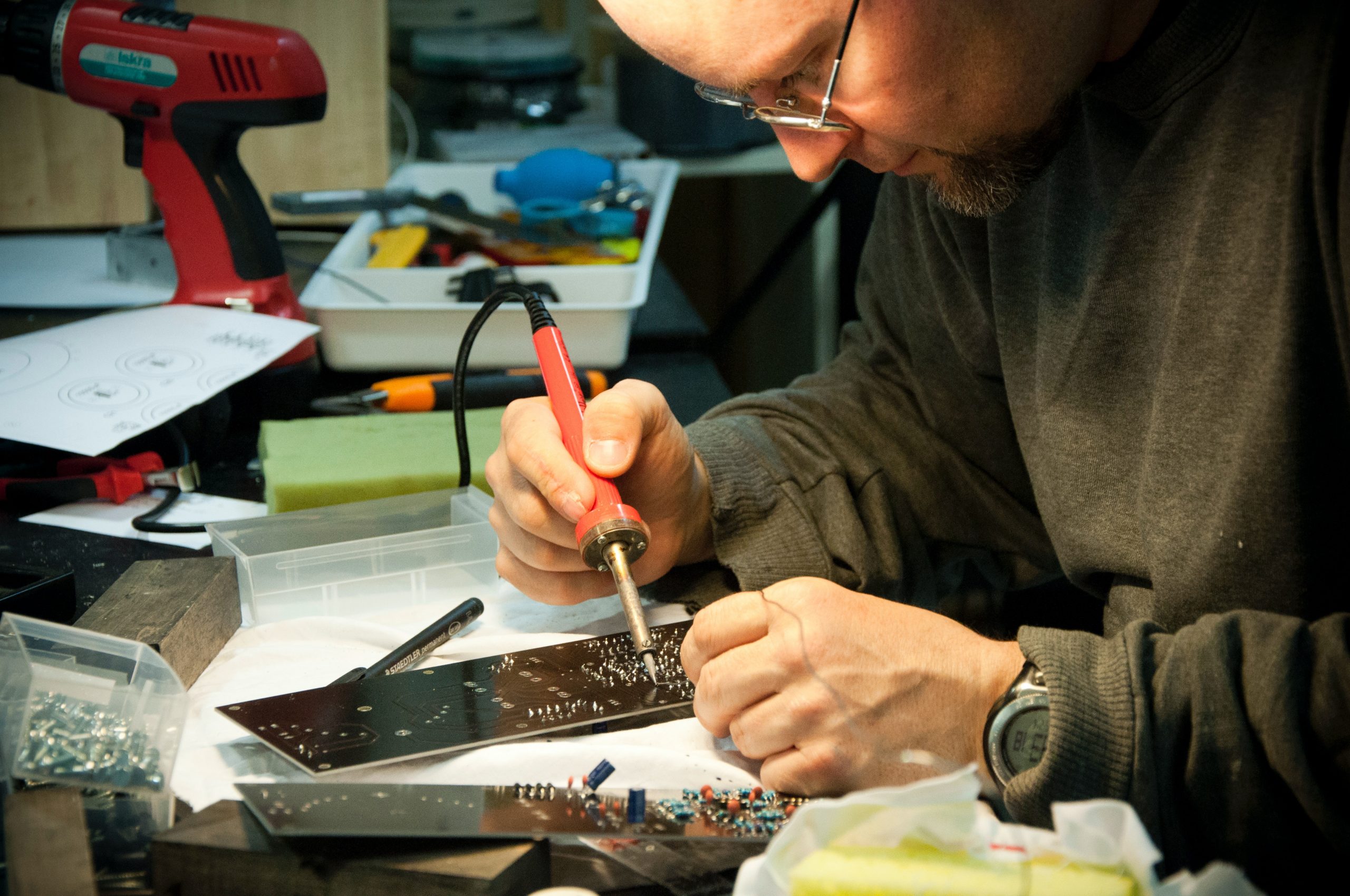
Career Development in Organizations: Community Voices
June 10, 2015
Helping University Students Find Their Way with Major Maps
June 10, 2015By Bill Huffaker
General Motors’ head of career development shares his organization’s best practices
Though there is never a “one-size-fits-all” approach to managing career development within organizations, there are fundamental practices that foster an organizational culture that welcomes, integrates and sustains career development efforts. To illustrate what we identified as operational best practices, I will detail what we experienced at General Motors when the career development function was launched. Hopefully, you can readily apply these best practices to your own organization.
Ensure executive leadership commitment
Individuals’ careers unfold within the context of the organizations they are employed in, and the superstar of one organization can be a dud in another. Though varying factors influence career success, the primary enabler (or disabler) is the collective mentality of executive leaders, those having the greatest influence on culture and operating norms. Without executive commitment, it is not unusual to find that, in practice, functional responsibilities for career development default entirely to Human Resources or Training and Development, an untenable model.
As career practitioners, we understand that effective career development rests on clearly delineated responsibilities shared among employees, managers and the organization. Though each group is equally accountable for career development, success begins and ends with executive commitment. Left unexplored and fragmented, the opinions of executive leaders can drastically undermine the utility of career development programs.
Let data drive program design
At GM, we used survey results to position career development as an effort for employees, designed by employees. Results from a first employee opinion survey revealed that the lack of career development resources and growth opportunities were among the main causes of employee dissatisfaction, and managers lacked the skills to support their staff. Using this data, we produced a series of pragmatic and actionable career development training modules and warehoused them on a newly-created global career development website. Modules were designed primarily for employees and managers, but additional tools for HR professionals who facilitate topic training and informal discussions were also crafted and warehoused.
GM offers courses on resume writing, interviewing, networking, mentoring and managing personal brand. The content continues to grow rapidly. These resources are positioned in one of three work streams: design, discuss and develop. Design tools help employees create a vision for their GM careers while Discuss materials encourage meaningful career dialogue between employees and managers. This section reinforces the concept that the job of manager has shifted from boss to coach. Finally, the Develop section delivers employee information specific to both growing in the current role and preparing for the next one. In this section, there are numerous links to internal resources as well as to external web-based material like TED talks, career articles and video feeds. An online platform also fuels the discussion of what the employees and managers need next.
By creating both a recognizable content framework and a common career development language, GM’s executive leadership clearly understood that their responsibility is to enable career development. Managers support the development of their employees and employees drive their careers.
In the 18 months between the first and second employee opinion surveys, overall career development satisfaction significantly improved by 16%.
Manage the talent pipeline
GM managers at all organizational levels engage in talent reviews to assess current and future leadership needs. Through these programs, we are able to identify high-potential employees and offer them enhanced development opportunities. High-potential senior leaders who may become executives in the future are a critical target audience. For them, we developed the Leadership by Design program that has three primary focuses:
- Knowing yourself: who are you today?
- Growing yourself: who do you want to become?
- Growing your future: what is your leadership legacy?
The thread connecting these three elements is the emphasis on addressing body, mind, heart and spirit needs, a new approach for GM, and one that has been enthusiastically received and widely adopted. The approach integrates well with our leader development dynamic of building on a leader’s strengths rather than attempting to eliminate weaknesses.
Be mindful of the Millennial phenomenon
Much has been written about Millennials and how they will continue to drive change within organizations. Earlier this year, Goldman Sachs published their Millennials: Coming of Age report. By 2020, Millennials will represent almost half of the working population in the developed world, so we need to plan now for this imminent tipping point.
When we analyzed GM survey results for the Millennial subset, we unearthed a career gap that required urgent attention. We found that Millennials lack the skills to successfully navigate their careers in a corporate setting. Though their educational experience may have helped them make a vocational choice, they entered GM without the tools necessary for career success and job satisfaction. We as a career development community must become better at helping Millennials transition from school to work.
In addition to tailoring career development materials to the younger generation, we designed manager materials to educate them about the millennial psyche and designed a training platform to hone their skills in managing multi-generational teams. At a functional level, we must “crack the code” of integrating Millennials into our organization. We need to upskill Millennials so that they have the expertise to successfully build their careers at GM rather than jumping from company to company in their quest to discover an environment where they fit and where their needs are met.
Shift organizational concept of career: from linear to lattice
One element of the career discussion that is difficult to change is the outdated notion that building a career equates to being promoted, having greater responsibilities, and earning more – essentially, experiencing linear progression within an organization. Even in today’s flattened environments, many do not recognize that the rungs of the traditional “ladder of success” have disintegrated. Career management, then, must be reframed.
At GM, we stress lattice progression that offers career growth, but not traditionally upward movement. Instead, like a vine turning to gather sufficient light to enable growth, lattice progression may be sideways, up, and perhaps down for a period of time. The career goal, the “sufficient light,” is to gather experience, develop and deepen skills, and “work” the career plan, a plan that, to be realistic, must anticipate personal life events. For example, someone new to parenting or taking care of an elderly or sick parent might choose to remain in their current job or take a job with fewer responsibilities rather than making a significant career change that would greatly tap their energy.
Reframing organizational understanding of career progression from linear to lattice is an important career cultural shift and is effected only by consistently and continuously reinforcing the message. Give managers and employees a common career development vocabulary used repeatedly in performance and development discussions, organizational communications and targeted training. Focused messaging does shift perceptions over time.
Launch and iterate
Career development is an organic process that must shift as societal memes shift and as organizations change to meet new challenges. At GM, we continuously conduct focus groups between survey cycles to remain current on organizational needs. Information is routinely shared among functional leaders to encourage the cross-pollination of ideas and to stimulate new thinking.
We know that there is never a “once-and-done” to any of the career development materials and programs we develop and that they will always require modifications to reflect the current organization. We have found that auditing materials on a regular basis is a useful and necessary discipline.
I have offered glimpses into several career development practices that have effectively reframed GM’s culture regarding career, but these “best practices” would have had no impact without the support of the CEO and her executive team. Also, just like career progression, applying career development practices and designing programs are no longer linear events.
At GM, we understood that if we offered one program at a time and the most recent one was less than a spectacular success, we would lose organizational credibility and functional momentum. Therefore, we multi-threaded our career initiatives so that if one program failed, another would buttress the overall effort and fill the space until we could refine the non-performing program. It has proven to be a good strategy.
Career development management. As much an art as a science!
Bill Huffaker, PhD, is the Director of Global Talent Management and Talent Acquisition at General Motors. He is passionate about designing forward-thinking talent strategies that transform corporate cultures, effect system-wide change, and optimize employee engagement and performance. Always the driver and never the passenger, Huffaker has achieved stellar results in a variety of high-profile, global companies that are undergoing significant change, including General Motors, Google, Microsoft and Visa.

